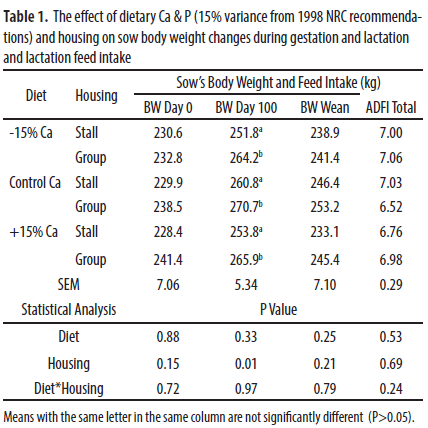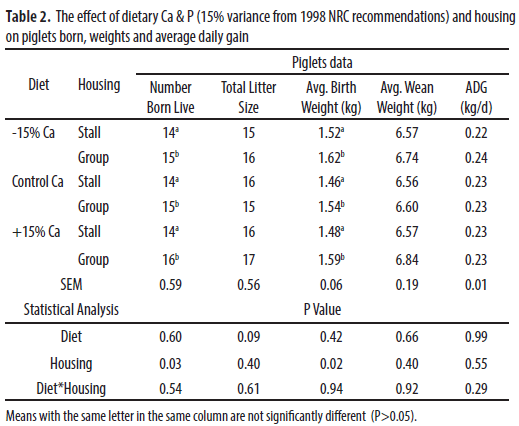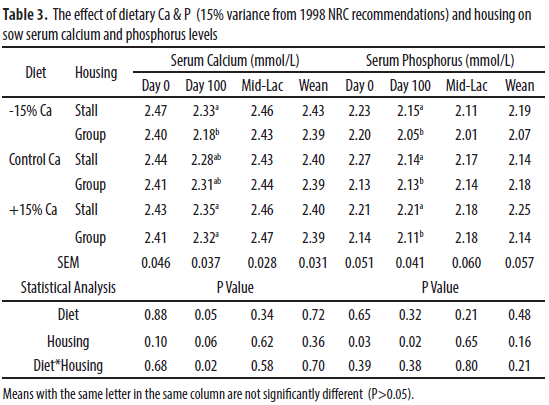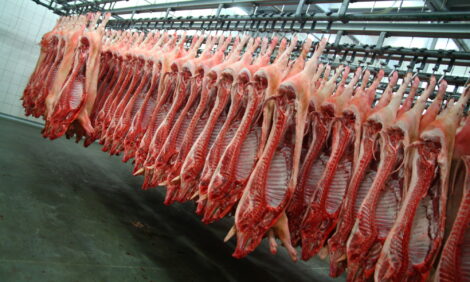



Impact of Calcium and Phosphorus on Sow Lameness and Sow Longevity
New research from the Prairie Swine Centre shows that current recommendations are adequate for group-housed sows in a non-competitive group housed situation.

Summary
The current NRC Swine (1998) recommendations for calcium and phosphorus feeding levels for gestating sows are primarily based on data for stall housed sows. Additionally, much of the literature on calcium and phosphorus requirements is older and may not be relevant to the modern, high producing sow.
A trial was conducted to determine if the current recommended feeding levels of calcium and phosphorus during gestation are adequate for high producing sows housed in stalls or groups.
It was found that the current recommendations are adequate for group housed sows in a non-competitive group housed situation.
Researchers also observed increased performance in the group setting, with group-housed sows giving birth to larger litters and heavier piglets.
Introduction
Improvements in sow productivity have raised the question of the adequacy of dietary mineral recommendations. The increase in anatomical and physiological demands of the skeletal system has led the feed industry to routinely recommend higher dietary levels of minerals including calcium (Ca) and phosphorus (P).
There has been very limited research examining the calcium requirement of the modern, highly prolific sow. It is not known if the calcium requirement has changed to accommodate milk requirements of the larger litter, and/or if the sows are required to mobilise calcium from their bones for milk production. Increased calcium demands could be a potential cause of reduced longevity for our sow herd.
Currently, Canadian producers are faced with extremely high feed and housing costs, and reduction in sow longevity leads to increased costs associated with raising replacement gilts.
Welfare of reproducing sows confined in stalls is a concern. Food retailers have been revisiting their purchasing strategies to not include pork from farms with individual stalls.
* "Current calcium and phosphorus recommendations are adequate for group housed sows in a non-competitive group housed situation" |
Confinement offers no opportunity for movement and it has been proposed that movement is required to maintain bone strength and integrity. Questions have been raised on whether the current recommended levels of calcium and phosphorus will be sufficient for animals housed in groups, with the potential for increased mobility.
To help answer these questions, an experiment was conducted to determine the influence of dietary calcium and phosphorus levels in the gestation diet of high producing sows housed in stalls or groups on calcium and phosphorus balance, productivity and bone turnover.
Materials and Methods
The experiment was designed using a 3×2 factorial arrangement of treatments. A total of 180 sows were randomly assigned to each treatment group. Three dietary levels of calcium and phosphorus were used at an equal ratio; Ca 0.76 per cent: P 0.67 per cent (Control), Ca 0.65 per cent: P 0.57 per cent (-15 per cent) and Ca 0.87 per cent: P 0.77 per cent (+15 per cent).
Two different housing strategies were used; individual stalls and group (modified free access housing). Free access housing ('walk-in lock-in' stalls) allows sows access to feed in a non-competitive environment, however they can leave the stall when desired. To accommodate the experiment, these sows were locked in for individual, controlled feeding and then forced out of their stalls into a group pen for the remainder of the day. Treatment groups were balanced across parities.
Sows began consuming treatment diets four to five weeks post-breeding. They were fed 2.3kg per day as per normal barn practice. Water was available in stalls and in the group areas. Sows were moved into a farrowing room one week prior to expected farrowing. Sows were weighed when they entered gestation, farrowing and weaning (day 28 of lactation). Piglets were weighed three days post-birth and at weaning.
Feed and faecal samples were obtained in gestation and lactation to allow estimation of calcium balance. Milk and blood samples were analysed for calcium and phosphorus. Blood was also analysed for biomarkers indicative of bone mobilisation. A sub-sample group of sows were equipped with activity monitors and were video-taped to allow estimation of activity.
Results and Discussion
Sows housed in groups were heavier at day 100 of gestation than those in stalls, despite no difference in feed intake (P<0.05; Table 1). Moreover, sows housed in groups had larger litter size and heavier piglets (P<0.05; Table 2).
Diet had only modest effects on production parameters, however, there was an apparent diet × housing interaction for serum calcium at day 100 of gestation where serum calcium was low in sows fed the low-calcium diet but only in sows housed in groups (Table 3). This could be a result of increasing foetal weight, since they also had more piglets born. Serum phosphorus showed similar tendencies when diet calcium:phosphorus ratio remained similar (Table 3).



Conclusion
The researchers conclude that current NRC recommendations for dietary calcium and phosphorus for gestating sows is adequate regardless of housing.
Moreover, in this study, housing in groups during gestation improved sow production, as indicated by increased litter size. Sows were not required to compete for food in our housing system, which may be a concern with some group-housing systems and should be taken into consideration if reductions in performance are observed.
Acknowledgements
Strategic funding provided by Sask Pork, Alberta Pork, Manitoba Pork Council and Saskatchewan Agriculture and Food Development Fund. Specific project funding was provided by the Canadian Swine Research and Development Cluster (Swine Innovation Porc).
October 2013








